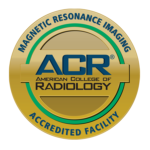
If you are at all familiar with medical imaging you may have heard of a variety of procedures such as magnetic resonance imaging (MRI). However, if you have recently been told that you need a magnetic resonance venography (MRV), you may not be familiar with the term. While like the MRI, the MRV doesn’t use radiation to produce an image, it does allow your physician to get a clearer vision of what is taking place inside of your body. More specifically, the MRV is designed to allow your doctor to examine your blood vessels.
The MRV is a highly accurate and noninvasive imaging technique that is used to focus on the body’s veins and determine vein health. Veins bring blood from the body’s organs back to the heart where it is oxygenated and regains vital nutrients. The MRV assess blood flow and detects detrimental abnormalities such as blood clots. Additional conditions this imaging technique could uncover are structural vein abnormalities,blood flow issues in the brain, and deep thrombosis in the veins (not the arteries). An MRV can also help evaluate conditions that can cause neurological symptom including intracranial hypertension and normal pressure hydrocephalus (NPH).
The same equipment that is used for an MRI is used for an MRV. The MRI machines use magnets that capture information and send it to a computer that has software that interprets the meaning of the information it has received. This information is used to create images that can be used to determine your medical condition.
While an MRV doesn’t use radiation, patients may be required to receive an injection of a contrast material called gadolinium to optimize results. Allergic reactions from the injection are rare. The MRV itself is comfortable, but may be challenging for patients who are claustrophobic, as patients have to lie inside a tubular imaging machine for an extended amount of time. Patients who get nervous easily or become uncomfortable while lying on their backs may be prescribed a relaxant or pain medication to make the procedure more comfortable.
Because the imaging machine uses magnets, a screening questionnaire will be used to determine safety of any metals devices in the body. Patients will need to remove all jewelry and are encouraged to listen to music during the exam as the imagine machines are very loud.
After an MRV, patients can return to their normal daily activities as long as they haven’t taken any relaxation medication. Their physicians will review the images and go over the results so a medical plan can be created if needed.
An MRV is a comfortable and accurate imaging procedure that allows patients and doctors to get the answers they need about vein health so they can live the healthiest lives possible with peace of mind.

